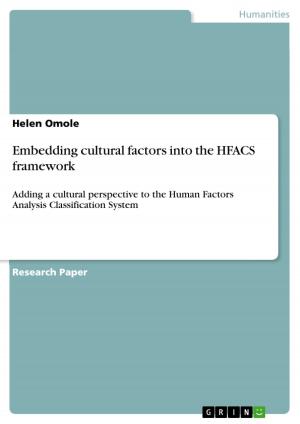Rochester and Bertha in 'Jane Eyre' and 'Wide Sargasso Sea': An Impossible Match
Fiction & Literature, Literary Theory & Criticism, British| Author: | Laura Deneke | ISBN: | 9783638579414 |
| Publisher: | GRIN Verlag | Publication: | December 11, 2006 |
| Imprint: | GRIN Verlag | Language: | English |
| Author: | Laura Deneke |
| ISBN: | 9783638579414 |
| Publisher: | GRIN Verlag |
| Publication: | December 11, 2006 |
| Imprint: | GRIN Verlag |
| Language: | English |
Seminar paper from the year 2005 in the subject English Language and Literature Studies - Literature, grade: 1.0, The University of North Carolina at Chapel Hill, course: The Victorian Afterlife, 12 entries in the bibliography, language: English, abstract: Bertha Mason in Charlotte Brontë's Jane Eyre is a character without history or personality. She is depicted as a mere beast, bent on destroying her husband. The reader knows -and dreads- her from both Jane's and Rochester's perspective. Rochester claims that Bertha's lunacy was the sole trigger for the disaster that followed, but the narration reveals hints that suggest other factors may have contributed to the destruction of their marriage. Jean Rhys proposed a past for Bertha and her husband. Her novel Wide Sargasso Sea creates a life for Bertha, on the background of which her madness is neither surprising nor inevitable. Whereas there is no doubt that she does become insane at the end of Rhys's novel, the reason for this is not her evil nature but a destructive relationship along with her transportation away from everything she ever knew into the cold of England. Wide Sargasso Sea is more than a prequel to a famous Victorian novel. It speaks out not only for Bertha but for all the other West Indian women who found themselves in similar situations.
Seminar paper from the year 2005 in the subject English Language and Literature Studies - Literature, grade: 1.0, The University of North Carolina at Chapel Hill, course: The Victorian Afterlife, 12 entries in the bibliography, language: English, abstract: Bertha Mason in Charlotte Brontë's Jane Eyre is a character without history or personality. She is depicted as a mere beast, bent on destroying her husband. The reader knows -and dreads- her from both Jane's and Rochester's perspective. Rochester claims that Bertha's lunacy was the sole trigger for the disaster that followed, but the narration reveals hints that suggest other factors may have contributed to the destruction of their marriage. Jean Rhys proposed a past for Bertha and her husband. Her novel Wide Sargasso Sea creates a life for Bertha, on the background of which her madness is neither surprising nor inevitable. Whereas there is no doubt that she does become insane at the end of Rhys's novel, the reason for this is not her evil nature but a destructive relationship along with her transportation away from everything she ever knew into the cold of England. Wide Sargasso Sea is more than a prequel to a famous Victorian novel. It speaks out not only for Bertha but for all the other West Indian women who found themselves in similar situations.















